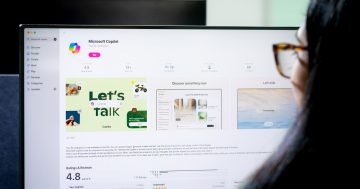Peter Moon* says computer keyboards are the primary tech breeding ground for the bacilli implicated in food poisoning, so it’s important to keep them clean.

Photo: ixek
Of all aphorisms, few hold more truth than “out of sight, out of mind”.
Nobody disinfects their tech gear because you can’t see germs.
Some of the germ “research” published online wouldn’t pass academic muster.
No offence to online trainers CBT Nuggets, but their widely cited 2016 report on workplace bacteria isn’t a PhD thesis.
Still, the gist of their findings accords with the science, and they spawned memorable headlines such as “Your computer keyboard is 20,000 times dirtier than a toilet seat”.
When many hospitals can’t convince their staff to maintain hand hygiene, and our own domestic research shows that 100 per cent of teenage males regard loo-flushing as an optional extra, it’s too much to expect that all tech users will get with the program.
But keeping your tech in healthier condition isn’t that hard.
Rule number 3 — we’ll come to rules 1 and 2 later — is that keyboards are the primary tech breeding ground for the bacilli that are typically implicated in food poisoning, and streptococcus and staphylococcus, the so-called cocci nicknamed strep and staph.
Their nooks and crannies are bacterial breeding grounds.
Cleaning keyboards
If you’re using an external keyboard, wired or Bluetooth, with hard plastic keys, you can adopt a robust approach.
Power off or unplug the device — because we always power down when performing maintenance — and give it a thorough cleanse with a microfibre cloth just moistened, not dripping, with isopropyl rubbing alcohol.
Turn the cloth on edge and floss between the keys.
Repeat.
Repeat again.
Your keyboard will be dramatically cleaner.
It takes only a few minutes and it’s not a bad sanity break in an otherwise mentally intense day.
Even better, if the low to middling risk of accidental damage is acceptable, detach the keys and clean them, literally, inside out.
Again, rubbing alcohol is ideal, leaving plenty of time for all liquid to evaporate before the key cap is popped back on.
Liquid anywhere inside a computer component is a bad thing.
Key removal
There are plenty of online videos showing how easy it is to pop and replace a key, and the satisfaction of DIY hardware maintenance is a grand feeling in these days of tech helplessness.
(Remember when most early mouse users knew how to unlatch the rolling ball, clean and replace it, and restore their hardware to as-new condition?)
If key removal and replacement isn’t your thing, just do the exterior wipe down every few weeks.
Next there are computers, aka notebooks, with integrated keyboards.
De-germing these is a compromise between cleanliness and expensive damage, so you probably won’t risk trying to detach the keys.
Use the wipes
Avoid an alcohol rub in favour of an antibacterial wipe, available in pharmacies and supermarkets.
Rub one on a mirror to test whether droplets of any size are released and squeeze it even drier if they are.
The last thing you want for your laptop is liquid on the inside.
Then give it the best wipe over you can, without depressing the keys.
It takes care but we’re no micro-surgeon and we haven’t fouled up so far.
The key, no pun intended, is to lightly wipe the whole surface regularly.
Once your board is a bacterial hotbed, there’s no safe way to rescue it.
What about rules 1 and 2?
No. 2 is the medico’s motto: first, do no harm.
Don’t bust your device in the cause of cleansing it.
Except with hardware we can afford to lose, we never work on it without checking the manufacturer’s recommendations.
You could merrily douse a computer screen in supermarket glass cleaner 10 years ago.
On today’s iPhone, you risk stripping its anti-fingerprint coating.
Apple’s support site actually lists different safe-cleaning instructions for iPhone models going back 10 years.
What was safe for an iPhone 3 could scar your brand new XS model.
Even if we are confident that a cleaner won’t do any damage, we check it out on an inconspicuous area — just like fabric cleaning products have recommended since the 1960s.
And No. 1?
For most of us, the bugs on our board arrived via our own fingers.
The germ you don’t bring back from the washroom doesn’t make its home in your keyboard.
* Peter Moon is a technology lawyer with Cooper Mills and an AFR contributor.
This article first appeared at afr.com.au/.










